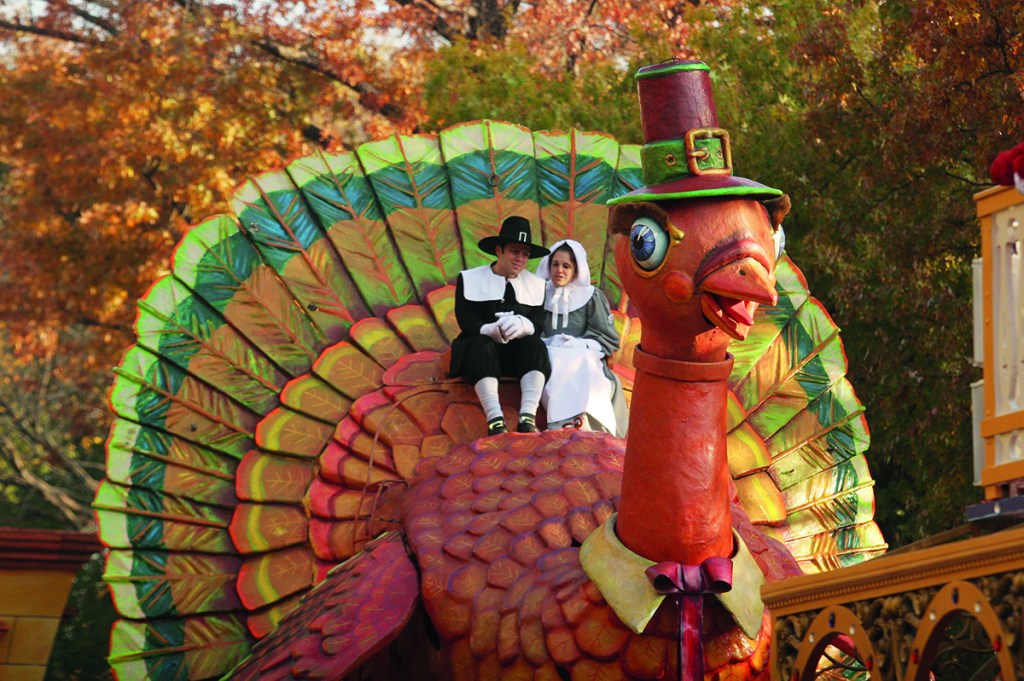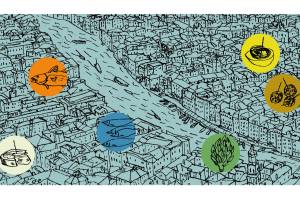Thanksgiving is probably my favorite holiday, and not only because it offers an excuse to dine lavishly among friends. It also provides an occasion to live up to its name and give ourselves the pleasure of correcting Aristotle. Man, the old Greek said in a distracted moment, is the rational animal, ζῶον λόγον ἔχον. Clearly, what he meant to say is that man is the ungrateful animal, ζῶον αχαριστίαν ἔχον. Since Thanksgiving is all about enumerating one’s blessings, it is one of those rare opportunities in which everyone’s favorite pastime, virtue-signaling, can be indulged while thoroughly enjoying oneself.
I should acknowledge straightaway that there are two schools of thought about Thanksgiving. One school, the orthodox or Cavalier school, holds that the feast should center around turkey, the creature that Benjamin Franklin proposed as the national bird. The other, revisionist or Roundhead school, eschews turkey in favor of goose or even some other animal protein.
The rationale for this reformist position centers around fat. Turkeys are lean birds. They therefore tend to have a delicate taste and if not cooked properly (lots of butter, frequent basting) can be dry, especially the white meat.
Regular readers will not be surprised to learn that I, traditionalist that I am, hew to the orthodox, Cavalier line on the question of what to serve at Thanksgiving. Turkey is essential. Here’s the menu chez Kimball from 2019:
Le saumon fumé
La dinde rôtie à l’américaine
Sauce au jus naturel
La purée de pommes de terre
La purée de courge ‘butternut’
Les choux de Bruxelles sautés avec pancetta
Les oignons rôtis
La farce au pain ‘Mary Boyce’
Deux compôtes aux airelles
La tarte tatin aux poires
La torte aux pommes Nouvelle-Angleterre
La torte aux potirons
Fromages
Cafés, Thés, Digestifs
What about this year? Look, Lord Falkland got it right: ‘When it is not necessary to change,’ he said (or is said to have said), ‘it is necessary not to change.’ The T-Day menu changes but little from year to year in this household.
But what, you are asking yourself, about the wines? Those do change from year to year, though, like at any sensible dinner, we begin with Champagne and end with vintage port. I haven’t decided which wines yet, but am pretty confident that the white will be a Saint-Aubin, the red a Morgon or Julienas.
Do you know Saint-Aubin? It is the (slightly) poorer cousin of the greatest white wines in the world, the stupendous (and sometimes dizzyingly expensive) wines around Montrachet, which is the Everest of White Burgundy. The Saint-Aubin commune, which is home to many premier crus, lies just to the west of Chassagne-Montrachet and Meursault in the Côte de Beaune. Reds are made in Saint-Aubin. In fact, the region used to make reds predominantly, but no longer. Now, one goes there for the whites, most of which are 100 percent Chardonnay.
By and large, the closer the vineyards come to Montrachet, the better the wine. The most renowned crus on that hill are En Remilly, Chatenière and Les Murgers des Dents de Chien. In Saint-Aubin as elsewhere, different growers produce wines of different character and quality. I have been delighted with the Saint-Aubins from Olivier Lamy, who presides over several parcels pioneered by his father Hubert. One favorite is the 2017 Saint-Aubin Blanc, La Princée, from Domaine Hubert Lamy. It’s about $50 a bottle — maybe a little more — but it is as rich and seductive and lingering as a Chassagne- or Puligny-Montrachet at two or three times less the price. I hope I can find some.
I also hope I can find a good Morgon or Julienas. In my opinion, Beaujolais has an unmerited bad reputation. It’s true that the market is flooded with indifferent, even candified wine from that region, what I think of as picnic wine when the picnickers are beer drinkers extending themselves a bit. But Gamay is a noble grape and at its best can make for complex and ensorcelling wine: wine that amply lives up to the chief desideratum Wallace Stevens demanded of poetry: it must give pleasure.
A few recent favorites, one of which I plan to reprise, is the Morgon ‘vieilles vignes’ from Guy Breton (about $40), one of the best winemakers in Beaujolais, a title he shares with the Lapierres: Matthieu and his children Marcel and Camille. Their 2017 Morgon and Julienas were spectacular. I eagerly await their 2018, which will also be about $40.
Incidentally, Lapierre wines come with a wax rather than a leaden or foil cap. The best way to extract the cork, I’ve found, is to drill right through the wax capsule and then pull. The capsule breaks off neatly and any unattached flecks of wax left behind can easily be collected and discarded.
Happy Thanksgiving.
This article was originally published in The Spectator’s November 2020 US edition.


















